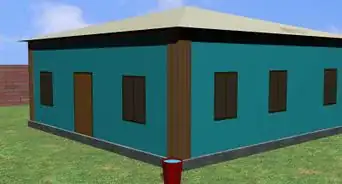This article was co-authored by Andrew Peters. Andrew Peters is an Architecture and Construction Specialist and a Principal at Peters Design-Build, a full service architecture and construction firm in the San Francisco Bay Area. With over 20 years of experience, Andrew specializes in sustainable and holistic design and building practices. Andrew holds a Bachelor of Architecture and a Project Management Professional (PMP) certification and is a Leadership in Energy and Environmental Design (LEED)-Accredited Professional. He served as Project Manager for the international-award-winning “Refract House,” Team California’s entry in the 2009 U.S. Department of Energy Solar Decathlon, a project featured in over 600 online and print articles.
This article has been viewed 301,104 times.
Have you ever wanted to have a house completely hidden from the view of other people? Do you like caves or the deep smell of moist earth? Do you fear the imminent apocalypse? Well, you might want to build an underground house. It will take some time and effort, but if you’re wiling to commit to the project you could have your own underground shelter sooner rather than later.
Steps
Preparing to Build Your Underground House
-
1Check your zoning laws. You can call your state to check the zoning laws of your property to see if you are allowed to put a new building on your property. You don’t want the state to ruin the fun by fining you for your newly created underground house. Even if you’re underground you're not safe from the law.
- Fully-underground houses are actually illegal in many places because the lack of windows means they can't meet fire codes.[1]
-
2Get permission from the state to dig. More official business. You need to pre-mark the area on your property that you want to excavate with stakes and white paint. Then you call your state’s Dig Safe branch and describe the area that you plan to dig in. Hopefully they will grant you permission. You definitely have to do this to ensure that you’re not going to dig into a sewage system or something like that.Advertisement
-
3Hire a professional excavator or buy professional equipment. Hiring a professional to do it for you wouldn’t be the worst idea. Depending on the size of your house you probably are going to need to use heavy machinery, and if you have no experience with that hiring a professional is probably the way to go. Search for professional excavators on the internet or contact a local construction company. They should be able to quote you a cost and at the very least offer you some helpful tips. You may be able to negotiate a price to use their equipment if you can prove that you are trained to use it.
-
4Find someone willing to help you. This isn’t a solo job even if you really want it to be. When you’re excavating or dealing with heavy materials you need someone to make sure that you are safe. You are going to be dealing with a lot of heavy materials and working in the earth and something could happen at any time. Make sure you have a partner.
-
5Find a suitable location. Look for a spot that is outside of your area’s 100-year flood plain and isn't near any steep slopes that might trigger a landslide. A large open space is probably best suited for an underground house, because tree roots can also cause issues during excavation. The odds are that you will be trying to build this house on your own property, so you probably don't have to worry too much but just be aware.
- Generally you want to stay away from any large objects like trees, boulders, or multi-story buildings.
- You also shouldn't place your house near any concentrations of fuel or any hazardous materials.
Designing Your Underground House
-
1Develop detailed structural plans. Work with an architect to design a scaled design and floor plan for your underground house. This plan should be complete with dimensions, details on the potential materials that will be used,
-
2Design your house. As you design your house you should consider air and water filtration systems, potential light sources, and food storage space. [2] Draw a model of your house to scale using the structural plans that you already created. Now draw in where all the installed appliances will go first, then the furniture, then anything else you would like to include in your plan. Be aware of the following constraints as well:
- If you are going to be underground for very long periods of time you will need to have your water set up to some sort of renewing water source and you will also need a ton of space to keep the food you have fresh. This means many refrigerators and a reliable power generator.
- A reliable air circulation and filtration system is also crucial to avoid getting carbon dioxide poisoning or other airborne illnesses.
-
3Include an entrance and exit in your design. This can be as simple as a ladder with a hatch on the top or even a tunnel leading up and to the outside. The easiest option is buying a staircase. You can buy a staircase online and have it delivered to your house, so it doesn’t even need to be part of the construction if you don’t want.
- If you decide to use a ladder you may need to secure the ladder to the wall with metal supports. Buy U-shaped metal supports at a home improvement store and secure these into your wall over the steps of your ladder. This will keep it stable while you are climbing up and down. You can also buy airtight hatches to secure the top of your entrance. Once again it is important to make sure that your hatch is significantly wider and longer than the hole you wish to cover.
Planning the Excavation
-
1Develop a strategy to dig your hole. Remember to dig based on the excavation area that you received permission to dig in. If you dig outside of that you risk digging into something like a sewer line or a fiber optic cable. Also know what kind of soil you'll be excavating. If you're digging into bedrock you won't get very far.
- You also should check your soil records at the town office before you start digging to see what you are going to be digging into and what kind of equipment you will need. Ask the clerk at the town office about your property and they will have the records available for you to see most of the time. If they don't, you might have to have someone come and survey your land.
-
2Investigate the conditions of your soil. It’s incredibly important to know what kind of soil you are working with, and this will also inform your digging strategy. Have a professional come and survey your soil.
-
3Consider a cut and cover strategy. Cut and cover works if you are digging in relatively soft soil. The idea is that you dig out an area, build a concrete structure inside of it, and then cover the hole thing up with dirt again. Obviously you want to keep your hatch or staircase exposed so that you can enter into your structure. However, if your soil will allow for it this is a good way to build a large framework for your home.
-
4Save the excess soil. This is especially important if you plan to create a berm house. A berm house is a house that is covered by soil but still has windows and doorways to the outside. Your house will sit in a deep foundation and once you have completed the construction of the building you can push the dirt up the sides and on top of the house to create the berm look. This will require a reinforced roof.
Constructing Your Underground House
-
1Build a perimeter wood frame. You will pour concrete into this frame in order to create a footing. The footings will form the basis for your foundation. The boards should be built according to the specifications of your foundation in your designed plan. [3]
-
2Install footings to provide the base for your foundation. Remember to seal the footings to protect them from moisture. Use a high quality sealer. You can pour concrete either directly into trenches or into wood forms. [4]
-
3Create stem walls. Start with the corners of the foundation and then build a plum and level wall connecting the two corners. Having something to connect the wall to on either side makes the process easier. It’s much easier to spot if the wall is out of alignment. Remove the flaws using hand trowels.
-
4Consider using reinforced concrete on the walls. You will want to use it on the ceiling too if you plan to cover your roof heavily with dirt and soil. Living underground will keep the temperatures relatively moderate, but the earth also puts a huge amount of pressure on the walls and ceiling of your house. [5] . It’s also essential to hire a structural engineer to design earthquake resistant elements if you live in an earthquake prone area. [6]
-
5Decide what kind of ceiling you want. You can choose a material as simple as wood boards or something more complex, but sturdier, like brick or concrete. If you choose brick or concrete ensure that you building has strong structural supports.
-
6Plan to have scaffolding or brick pillars secure your ceiling. You will have to lay the brick yourself by buying brick and mortar and building a thick pillar up to the ceiling. A six brick base should provide a decent support. If your room is very large you will want to build a few supports. Scaffolding is something that you can buy at a home improvement store, but is more likely to bend and break. Take this step very seriously or you risk potential cave-ins.
-
7Use wood beams to outline the rooms in your house. Set up these rooms in accordance with your design plans. Make sure that you leave space in the walls for any potential wiring that you’ll need to do.
-
8Consider insulation. Even though you’re living underground you may need insulation. This will keep your heating and cooling costs down and make your energy use much more efficient. Wait until after you have completed the wiring before you install the insulation.
Buying a Premade Underground House
-
1Research the kind of underground shelter you would want. Believe it or not there are plenty of companies that specialize in underground shelters. You'll be able to find a number of companies on the internet that can sell you pre-made houses in a variety of different styles. You can go pretty crazy here if you’re willing to spend a lot of money. Try to consider your price range and the amount of people that you plan to have living with you in this shelter.
-
2Purchase your underground house. In most of these situations you have to buy the shelter outright, because generally the idea is that you’ll be holed up in the shelter once you have it. However, some of these companies offer financing.
-
3Obtain approval to dig on your property. You first need to pre -mark your excavation area with white paint or stakes. Then call your state excavation number to describe the exact area where you plane to excavate. You will not be allowed to dig outside of this area. In Massachusetts this number is 8-1-1, but it varies state by state. This is important to ensure that you don't dig into a buried sewage system or fiber optic cable.
-
4Have your underground house delivered and installed. This is included in the price. Make sure there is a path for their truck to deliver your new house. You can’t have your dig site all the way out in the middle of the woods if there is no road to get there.The installation may take several days, so be aware of that.
Expert Q&A
Did you know you can get expert answers for this article?
Unlock expert answers by supporting wikiHow
-
QuestionCan I build my house completely under the ground?
 Andrew PetersAndrew Peters is an Architecture and Construction Specialist and a Principal at Peters Design-Build, a full service architecture and construction firm in the San Francisco Bay Area. With over 20 years of experience, Andrew specializes in sustainable and holistic design and building practices. Andrew holds a Bachelor of Architecture and a Project Management Professional (PMP) certification and is a Leadership in Energy and Environmental Design (LEED)-Accredited Professional. He served as Project Manager for the international-award-winning “Refract House,” Team California’s entry in the 2009 U.S. Department of Energy Solar Decathlon, a project featured in over 600 online and print articles.
Andrew PetersAndrew Peters is an Architecture and Construction Specialist and a Principal at Peters Design-Build, a full service architecture and construction firm in the San Francisco Bay Area. With over 20 years of experience, Andrew specializes in sustainable and holistic design and building practices. Andrew holds a Bachelor of Architecture and a Project Management Professional (PMP) certification and is a Leadership in Energy and Environmental Design (LEED)-Accredited Professional. He served as Project Manager for the international-award-winning “Refract House,” Team California’s entry in the 2009 U.S. Department of Energy Solar Decathlon, a project featured in over 600 online and print articles.
Architecture & Construction Specialist
References
- ↑ Andrew Peters. Architecture & Construction Specialist. Expert Interview. 24 November 2020.
- ↑ http://www.survivopedia.com/how-to-dig-your-underground-shelter/#
- ↑ http://www.doityourself.com/stry/how-to-lay-a-house-foundation
- ↑ http://www.diynetwork.com/how-to/rooms-and-spaces/basement/a-strong-foundation-installing-the-foundation
- ↑ http://www.offthegridnews.com/grid-threats/the-surprising-facts-about-earth-sheltered-living/
- ↑ http://www.greenhomebuilding.com/QandA/earthshelter/how.htm
About This Article
Before you build an underground house, get a professional to survey your location so you know the kind of soil you're working with, then call your state to get a digging permit. Next, you'll want to research different underground house designs online and decide which one you want. Design your house or opt to buy a pre-made building, then dig the area according to your requirements. Finally, hire a professional contractor to install the house, which can take several days. For tips on how to design your own underground house and how to build a frame, read on!






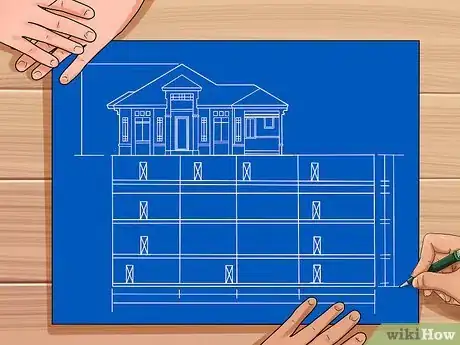

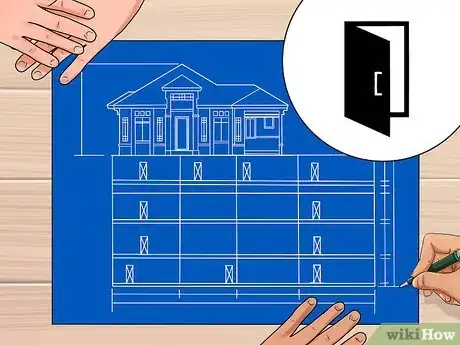
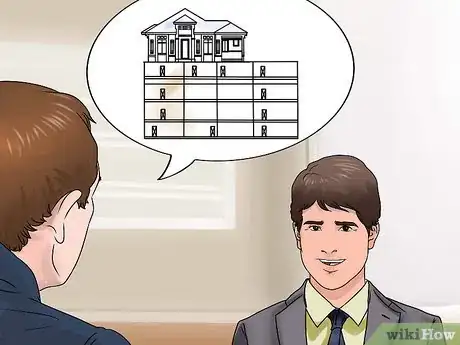
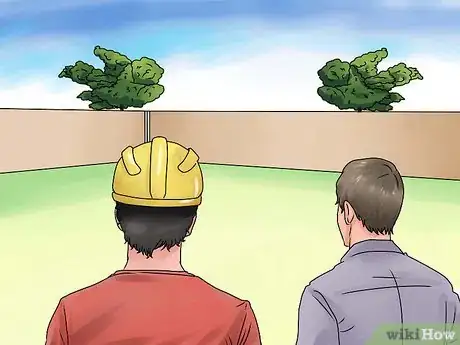
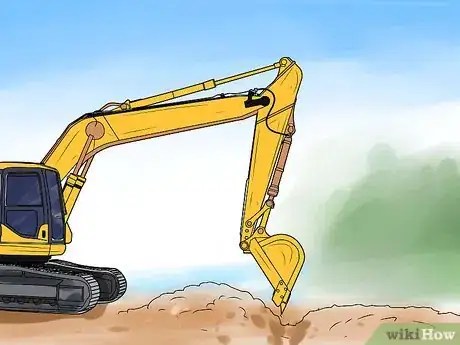


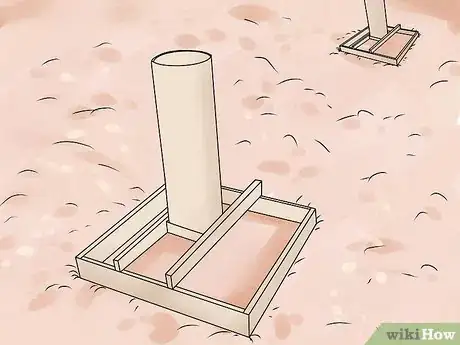













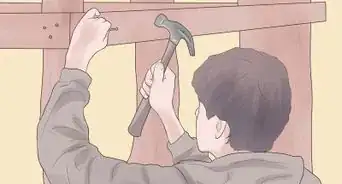



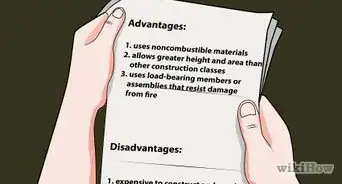

-Step-19-Version-2.webp)



